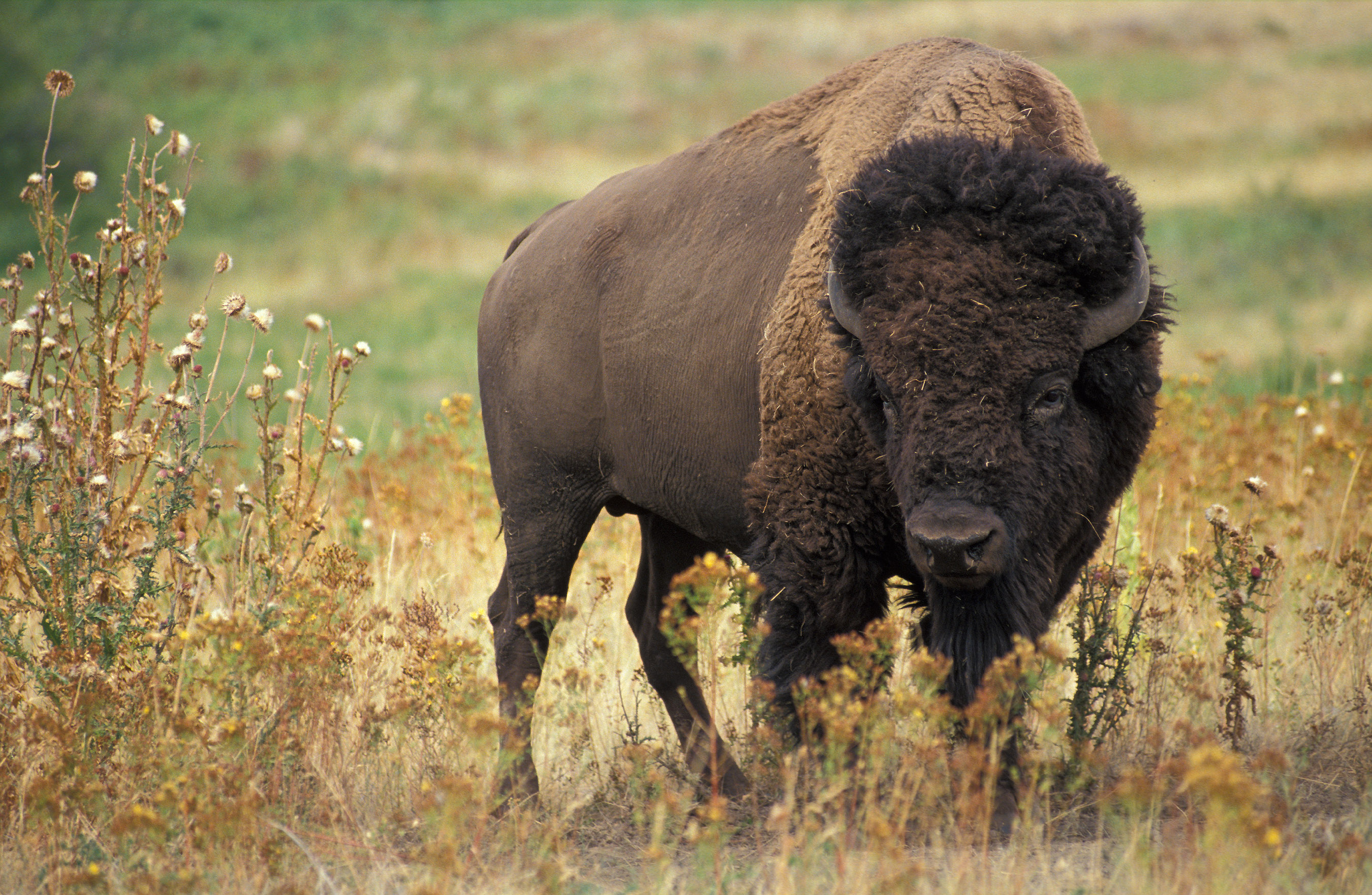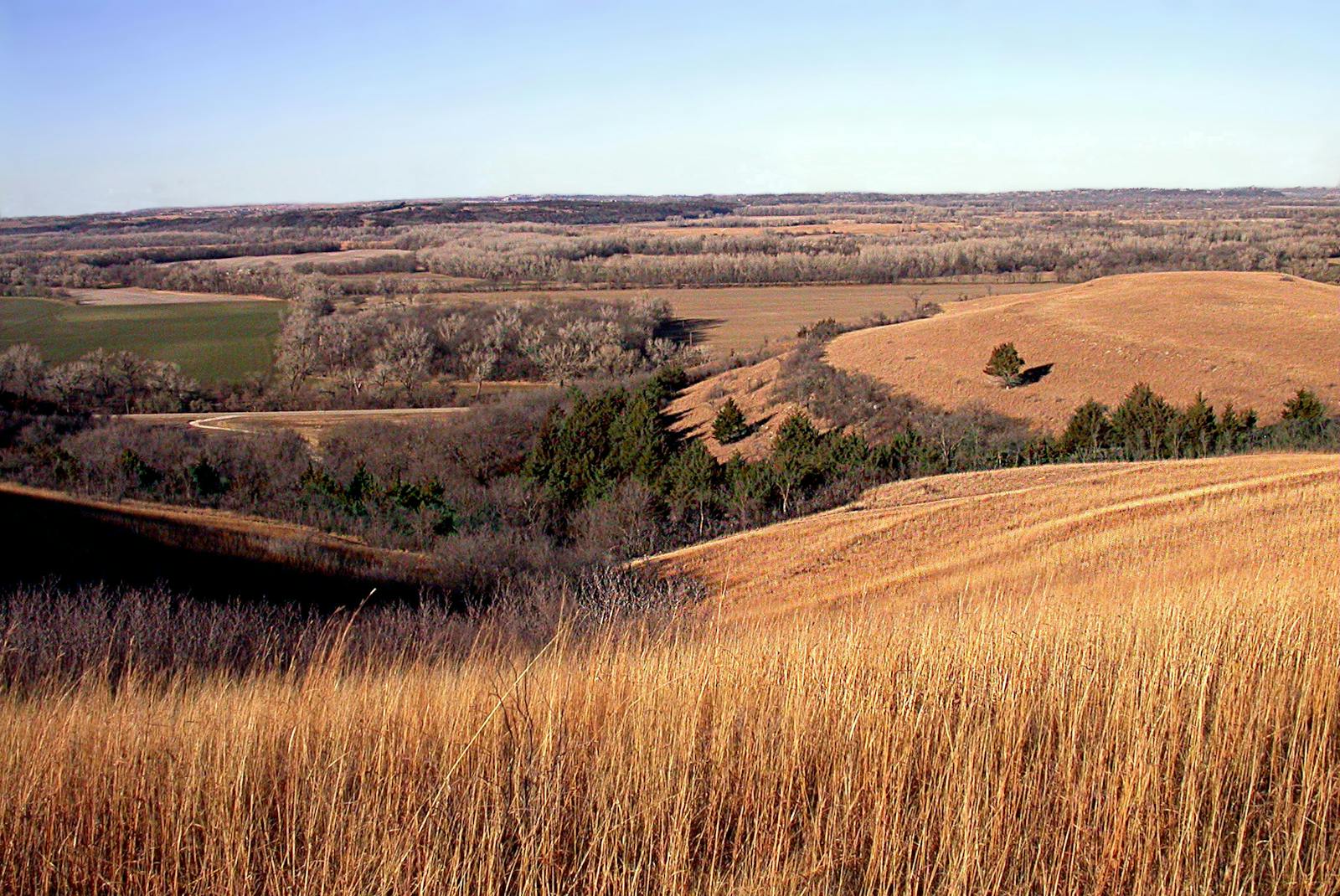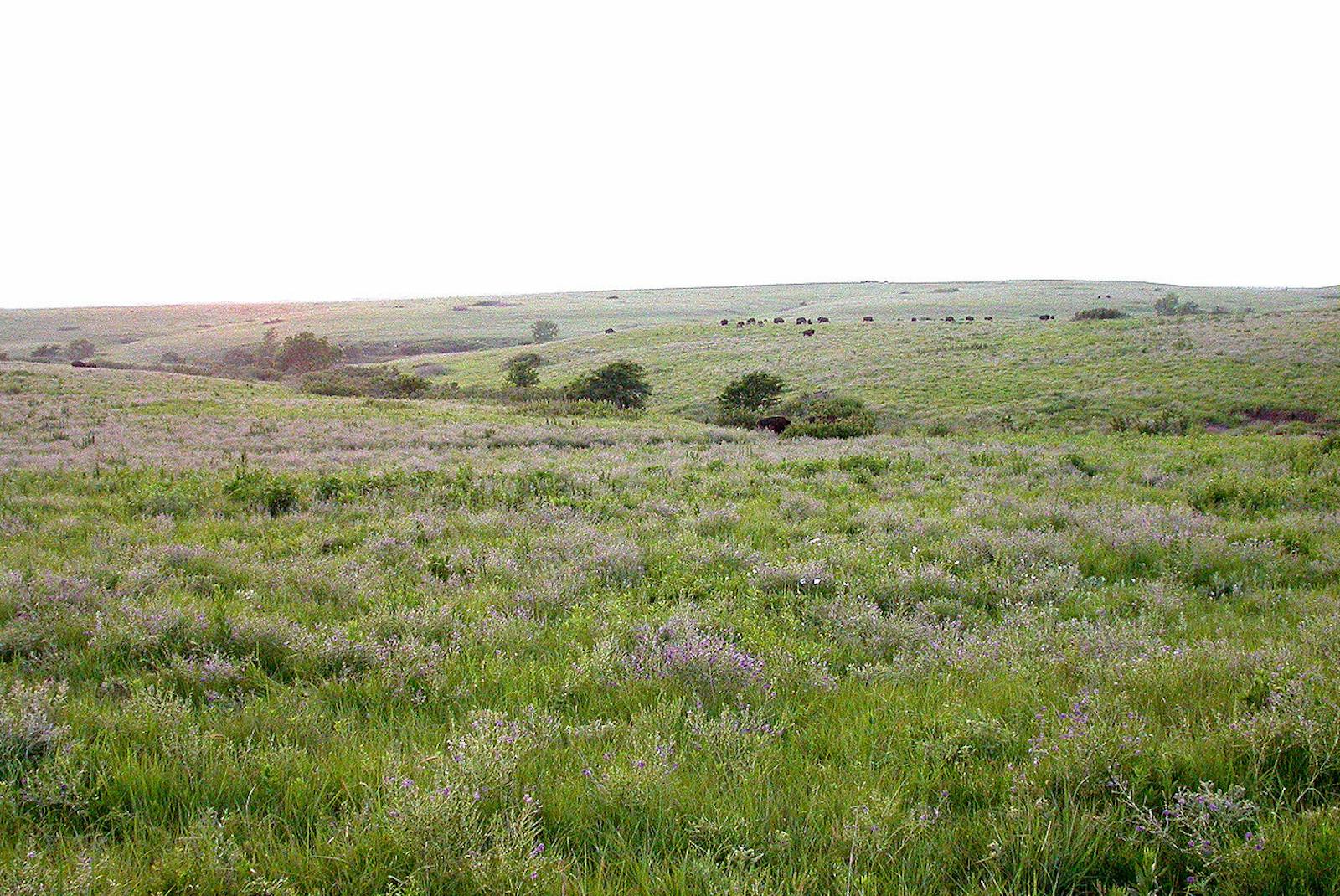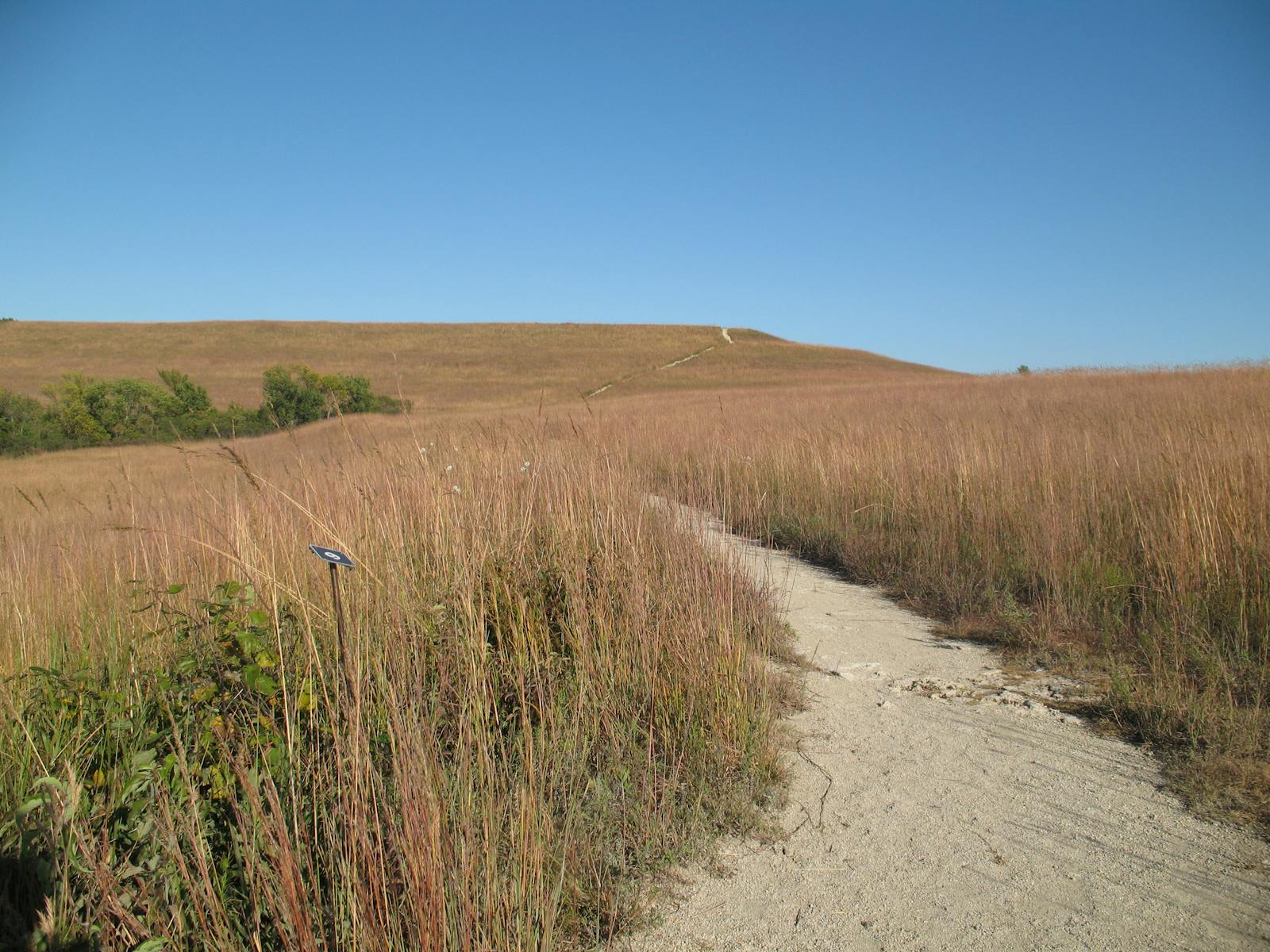Flint Hills Tallgrass Prairie
The ecoregion’s land area is provided in units of 1,000 hectares. The conservation target is the Global Safety Net (GSN1) area for the given ecoregion. The protection level indicates the percentage of the GSN goal that is currently protected on a scale of 0-10. N/A means data is not available at this time.
Bioregion: Midwestern Tallgrass Prairie & Forest Transition (NA21)
Realm: Northern America
Ecoregion Size (1000 ha):
2,798
Ecoregion ID:
392
Conservation Target:
16%
Protection Level:
1
States: United States: KS, OK
The Flint Hills Tallgrass Prairie ecoregion is distinguished from the Central Tallgrass Prairie to the east and northeast by its thin, cherty, limestone-derived soils, which hindered plowing for crop agriculture. To the southeast lies the Cross-Timbers Savanna-Woodland and to the west is the Central-Southern US Mixed Grasslands. The ecoregion is essentially a band of hills running from northeastern Kansas to a small part of northeastern Oklahoma. The highest elevation is 512 m. Due to its general unsuitability for crop agriculture, more of the Flint Hills remains in native prairie than in other tallgrass prairie regions of North America.
.jpg)
The flagship species of the Flint Hills Tallgrass Prairie ecoregion is the greater prairie-chicken. Image credit: Chrissy McClarren, Creative Commons
The climate of the Flint Hills Tallgrass Prairie ecoregion is in the ecotone from humid warm temperate to subhumid warm temperate. Annual precipitation (averaging 835 mm) and humidity are lower than within the Central Tallgrass Prairie to the east, and plant species richness is lower. The limestone bedrock dates to the Permian Period, with numerous bands of chert or flint. Limestone outcrops are common and most of the hills are covered with chert gravel.
The dominant grass species are big bluestem, Indiangrass, and switchgrass. Both fire and herbivory from large mammals are considered important factors in the maintenance of tallgrass prairie, and the combination of the two promotes higher biodiversity than either one alone.i Lightning and burning by Native Americans have both been important ignition sources for this ecoregion’s fire regime. Besides prairie, other natural communities in the ecoregion include oak woodlands and riparian forest.
Biological surveys within the Konza Prairie Biological Station have documented 576 vascular plant species, 31 mammals, 208 birds, 34 reptiles and amphibians, 20 fish, and more than 700 invertebrate species.ii Characteristic prairie birds include greater prairie-chicken, northern harrier, Henslow’s sparrow, dickcissel, and eastern meadowlark.
Mammals include many rodents and the American badger. Some of the most distinctive mammals were plains bison, elk, and their predator, the prairie wolf – the latter two are now extinct or extirpated from the region. Bison, however, have been introduced into the Tallgrass Prairie National Preserve as well as into The Nature Conservancy’s Tallgrass Prairie Preserve (see below), and greater prairie-chickens are relatively common within both preserves. A herd of approximately 300 bison is also maintained at Konza Prairie.

American bison. Image credit: Jack Dykinga, Creative Commons
Although only 1% of the ecoregion is protected and less than 1% of highly intact habitat remains outside protected areas, the protected areas include some large units—especially The Nature Conservancy’s 160 km2 Tallgrass Prairie Preserve in Osage County, Oklahoma (near the Kansas border), the 44 km2 federal Tallgrass Prairie National Preserve in Chase County, Kansas, and the 35 km2 Konza Prairie Biological Station in Geary County, Kansas. The national preserve is unusual in that the land is privately owned but managed by the National Park Service.i All three preserves are managed through patch burning and grazing by bison or cattle.
Priority conservation actions for the next decade are to: 1) expand the important existing protected areas in the ecoregion and acquire additional areas to better represent the full range of ecosystem types and provide enhanced connectivity among reserves; 2) improve management of existing conservation lands as well as private lands, for example by reducing stocking densities of cattle where appropriate; and 3) control invasive non-native species.
Citations
1. Sims, P.L., and P.G. Risser. 2000. Grasslands. Pages 323-356 in M.G. Barbour and W.D. Billings, eds. North American Terrestrial Vegetation, 2nd edition. Cambridge University Press, Cambridge, U.K.
2. Ricketts, T.H. et al. 1999. Terrestrial Ecoregions of North America: A Conservation Assessment. Island Press, Washington, D.C.
3. Flint Hills. https://en.wikipedia.org/wiki/Flint_Hills





